How Long Does A Termite Inspection Take? (Find Out Now!)

As a homeowner, keeping your home free of termites is a very important responsibility. Protecting your house’s structure from the little wood-consuming bugs can be a process. The first step in this is scheduling an inspection, but how long does a termite inspection take?
A termite inspection takes an average of two hours to complete. However, it may vary depending on your house’s size and the amount of prep work you put into it. Making sure your attic, basement, and crawl space are easily accessible and trimming back vegetation may shorten the inspection.
Still unsure what exactly an inspection holds and what preparations to make? Keep reading for more ideas and a rundown of what to expect.
Do You Need Pest Control Services?
Get free, zero-commitment quotes from pro contractors near you.

How To Prepare For A Termite Inspection
For a termite inspection, the inspector needs to look around your property for any evidence of termites. They look for droppings, mud tubes, broken wings, and damage to the wood of your home. Being able to get to “hard to reach areas” easily cuts down on the time the inspection takes.
Preparing Your Home’s Interior For A Termite Inspection
Before your inspection, the best thing you can start with is to rearrange areas where things may obstruct the inspector. For example, you will need to move anything you store under your sinks. These areas tend to be damp, and water in wood makes it precisely what termites want to eat.
Next, ensure you move anything that blocks the entrance to the attic, basement, or crawlspace out of the way. If you do this before the inspection, the inspector won’t have to stop and do it, taking up more time. This also prevents accidents like things falling over as you move other things, which could create a hazard.
Preparing The Garage And Your Home’s Exterior For A Termite Inspection
Make sure everything in your garage is pulled away from the walls, with enough room for a person. These areas border exterior walls, so the inspector needs to examine baseboard wood there as well.
If the exterior of your home is wooden, remove anything very close to the outside of your house. Trim branches, remove tall weeds and make sure the inspector can easily access the area.
What Affects How Long A Termite Inspection Takes?
Once the inspector arrives, they will spend roughly an hour and a half to two hours going over the property. The inspector will look at both the interior and exterior parts of your home. They search for visible evidence that termites are living or eating there.
The inspector will check your walls, windows, millwork (doors and window frames), crawl spaces, baseboards, closets, and cabinets. They will access every area of your home, focusing primarily on the kitchen, bathrooms, and utility rooms.
These areas are often hot spots for subterranean or ground-dwelling termites. These rooms are where plumbing accesses your home and creates gaps termites can access to gain entry.
The inspector will also go outside. They will look at the exterior walls and eaves of the house and closely examine the foundation.
They could find mud tubes made by termites on the foundation. They also look for damage to the wood or wood rot.
After inspecting the home’s interior and exterior, the inspector will move on to the yard. They will make sure there is no evidence of termite life cycles there. These could indicate termites that have a colony but have not damaged the house yet.
How To Prevent Further Termite Treatment
After your inspection, you will receive a report of what was found in your home and on your property. If there is an active infestation of termites, the inspecting company will recommend a treatment plan.
If the inspector finds no active infestation or damage, they may suggest preventative treatments to keep your home safe. These are optional. They also may recommend changes in your home practices.
Some simple tactics to keep termites from moving into your home are about changing habits.
Changes To Keep Your Home Termite-Free
Getting rid of excess moisture in your home is key. Moisture softens wood and allows rot, making it easy for termites to eat and leading to structural damage.
Repair any water leaks as soon as possible. Don’t let water collect near your foundation, and make sure the soil around your house has a slope. Clear gutters and use downspouts to divert water away from your home.
Another critical step is to maintain landscaping. Wood debris, mulch, and firewood should never come into direct contact with your home’s exterior walls. Remove dead or rotting wood from the property immediately, including old tree stumps, dead trees, and downed limbs.
Prevent any wood-to-soil contact on the property, including contact with any fences. Trim tree branches and shrubbery back so that they don’t touch any structures.
Broken roof tiles and open attic entrances can also expose wooden beams in the attic to exterior moisture. This provides termites with access to the attic.
If you use cardboard boxes in your attic, switch to something sturdier, like plastic. Cardboard is a soft, wood-based product that can serve as a food source for termites. Preventative measures could save you a lot of fees and hassle.
Scheduling An Annual Termite Inspection
Lastly, keep your eyes open for signs of a termite infestation. You may see mud tubes on the exterior of your home or broken or discarded wings in window sills. You may even notice hollow-sounding floorboards that echo with footsteps.
Professional termite inspectors see termite evidence all the time. Because of this, they are used to identifying infestations and may notice small things that the homeowner may miss. They also know which treatment options are better for prevention versus fighting an active infestation.
Do You Need Pest Control Services?
Get free, zero-commitment quotes from pro contractors near you.

Related Questions
What is the difference between termite spot treating and tenting?
Spot treatments are used to treat less than ten linear square feet and will only protect that specific location. These protect areas that are adjacent to infested areas. The effectiveness of these treatments decreases with the number of infested spots. Spot treatments involve drilling holes into the wood and injecting a termiticide or termite-killing chemical. This type of treatment is much riskier because it may miss some insects. This could cause long-term structural issues if the infestation survives. Tenting is when you use a tarpaulin or tarp to surround or encase the home. Then, professional vent sulfuryl fluoride gas into the house over three to four days. This gas kills any termites present and any that hatch over various days.
What are the differences between termite droppings and ant droppings?
Drywood termite droppings are tiny capsules with concave sides and rounded ends. Only about one millimeter in length, these can form small piles that collect beneath the kick-out holes termites make. They are usually more spread out. They may look like small piles of pepper. Ant droppings, or frass, is larger than that of termites. They also may contain bits of other ants that ants consumed for food. The main difference is that ants leave their droppings outside the opening of their nest. They’re not as spread out as termite droppings because they don’t come down from kick-out holes, spreading as they drop.
Do I need to clean my house after termite fumigation?
If you have a drywood termite infestation in your house, you may need to get a fumigation treatment with sulfuryl fluoride. This treatment pumps gas into the tented home over several days. During this time, you must evacuate the house and remove all animals, plants, and food. Fumigation companies claim that this gas does not leave a residue. Therefore, you don’t need to clean items like clothing, furniture, and plates when you come back to the home. However, you may clean the house yourself or hire a cleaning company if you have concerns.

Stacy Randall is a wife, mother, and freelance writer from NOLA that has always had a love for DIY projects, home organization, and making spaces beautiful. Together with her husband, she has been spending the last several years lovingly renovating her grandparent's former home, making it their own and learning a lot about life along the way.
More by Stacy Randall



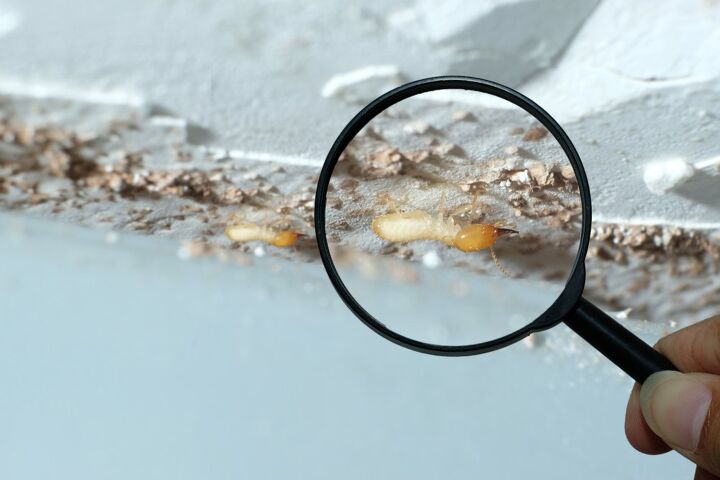






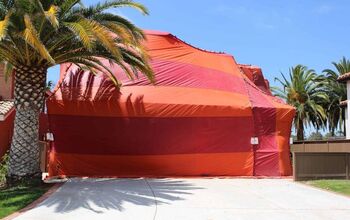
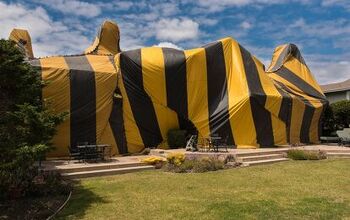
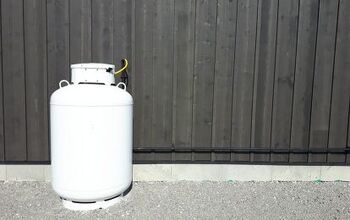

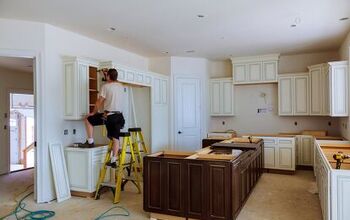







![12 Washing Machine Brands to Avoid [with Recall Data]](https://cdn-fastly.upgradedhome.com/media/2023/07/31/9075781/12-washing-machine-brands-to-avoid-with-recall-data.jpg?size=350x220)




